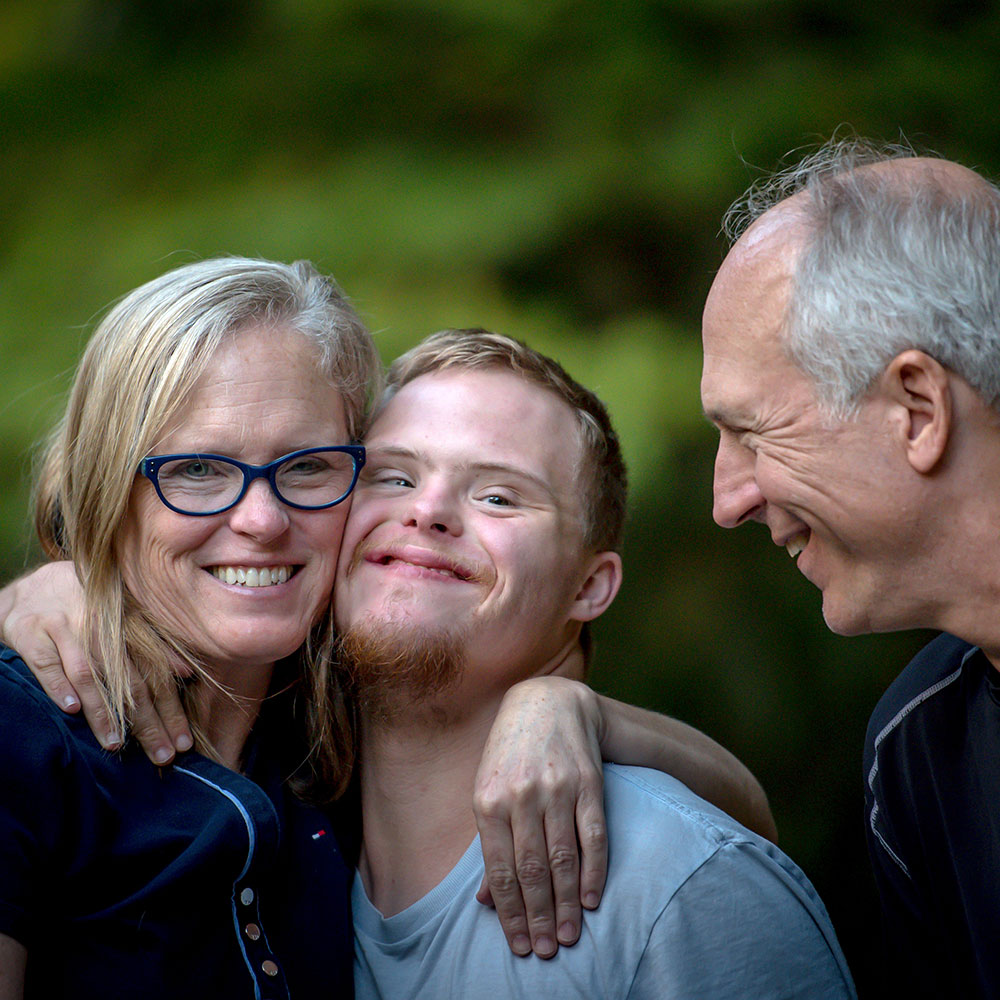How to Make a Difference
Preventing & Responding to Youth Dating Violence
What You Need to Know
- Youth Dating Violence is a Serious Health Issue
- Youth Dating Violence is Part of a Pattern of Aggression That Develops and Can Persist Over a Lifespan
- Certain Groups of Youth Face Higher Risk of Youth Dating Violence Involvement
- Youth May Be Unable or Unwilling to Reach Out for Support
- There is a Lack of Understanding on How to Respond to Youth Dating Violence Among Youth, Parents, Educators, and Other Adults
- Dating Violence is a Human Rights Issue
Youth Dating Violence is a Serious Health Issue
- Youth Dating Violence is common among teens in Canada.
- Approximately 30% of Canadian youth are victimized by Youth Dating Violence at one point in their lifetime.
- Research estimates about 1 in 5 youth experience physical dating violence, and about 1 in 10 experience sexual dating violence (research on other types of YDV are less clear).
- Experiencing or perpetrating violence is linked to many negative consequences:
- Mental health impacts
- Physical health impacts
- Decreased academic performance
- Legal issues (such as a criminal charge)
- Problems in future interpersonal relationships
- YDV is closely tied to domestic violence in adulthood which has an immense health cost for the individuals affected and for the Canadian health care system.
- YDV at its most extreme can result in homicide.
Approximately 30% of Canadian youth are victimized by Youth Dating Violence at one point in their lifetime.
Solution
Be aware of signs and how to identify YDV. By knowing what YDV is and what the warning signs are, you can intervene.
- Prevention is needed before aggression becomes a problem
- Understand that YDV prevention starts at a young age. For example, bullying is a precursor to engaging in YDV. By preventing bullying, you may be preventing YDV.
- Adults need to focus on helping youth develop non-aggressive ways of communicating and constructive ways of dealing with negative emotions such as frustration and anger.
- Help youth feel like they can disclose what is happening in their relationships. Use a non-judgmental, open, and caring approach when talking with teens.
- Check in regularly with the youth so they know you are there for them and they know they can come to you for help.
- Understand that YDV prevention starts at a young age. For example, bullying is a precursor to engaging in YDV. By preventing bullying, you may be preventing YDV.
- Know who is at risk to intervene and support:
- Check in with youth you are worried about – communicate with youth about their relationships and provide them strategies to manage conflict.
- Know who is at greater risk and observe and provide support to youth who are at risk of involvement in YDV.
- Help youth directly when they are experiencing YDV — provide emotional and informational support.
- Connect youth to resources and help if they need it — you can start with this website.
- Connect youth to mental health professionals, school counselors, and other adults who can help.
Youth Dating Violence Perpetration is Part of a Pattern of Aggression That Can Start Early, Develop and Persist Over a Lifespan
- YDV can involve the use of power and aggression. In these cases, there may be signs early in development that identify youth who are going to be at risk of perpetrating violence.
- Research shows that there is a strong link between experiencing or witnessing abuse in the family and perpetrating dating violence in the future. Perpetrating violence, such as bullying, in childhood is associated with attitudes accepting of the use of aggression and risk for YDV.
- Observing aggressive or unhealthy behaviours from adults may influence youths’ own behaviour and attitudes about aggression.
- Youth can learn to handle conflict and communicate with others through how adults resolve conflicts. Resolving conflicts through aggression teaches youth to do the same within their own relationships.
- Youth can learn about relationships from their friends and peer groups.
- Youth are more likely to view violence as normal when their peers engage in aggressive behaviours.
- Youth who have friends who perpetrate violence are more likely to accept the use of violence within their own relationships.
- The destructive use of power in relationships may become worse if left alone, both for individuals using violence and individuals being victimized.
- Youth who perpetrate YDV are at high risk of perpetrating violence later in their lives including their future relationships.
- Dating violence may become more severe the longer the relationship continues, putting youth at higher risk the longer they experience abuse. However, it is never too late to seek help.
- Many youth who experience violence or adversity in their childhood do not go on to perpetrate violence. Risk factors give an understanding of who may be at risk of perpetrating YDV, but do not at all guarantee future abusive behaviour.
Solution
- Intervene early: Aggressive beliefs, attitudes, and behaviours need to be addressed early on.
- Adults need to identify youth who show signs of aggressive behaviours so that they can connect them to appropriate help before they perpetrate violence.
- Prevention efforts need to start early to support the development of skills needed to form positive relationships (e.g., emotion management skills).
- There is also a need to address the attitudes and beliefs that may lead to aggression in relationships, such as gender role norms and beliefs about equity, in addition to relationship skills.
- Help caretakers teach and model healthy behaviour: Adults who take care of children need to teach and model healthy relationship behaviours.
- Provide information on healthy relationships and relationship violence to caretakers.
- Provide resources to caretakers such as strategies to resolve conflicts constructively and teach these effective methods to youth.
- Identify and provide support to caretakers who have aggression in their own relationships – YDV prevention also involves family violence prevention.
- Teach peer interaction: Adults need to reinforce healthy interactions among youth’s peer groups.
- Identify aggressive or unhealthy interactions such as bullying.
- Stop these negative behaviours and provide an alternative, healthy method of resolving conflict or managing emotion.
- Adults as role models in schools and communities: Adults need to model healthy relationship behaviours and methods of communicating in their own interactions with youth.
- In relationships between parents, and between other adult family members, there may be unequal power due to gender, money, culture or mental health.
- Adults can show how to use power positively within these relationships.
- Adults can demonstrate constructive conflict resolution with other adults as well as youth.
- See Strategies to Preventing YDV as an Educator.
- In relationships between parents, and between other adult family members, there may be unequal power due to gender, money, culture or mental health.
- Provide ongoing support: Youth need ongoing support in their development to avoid bringing violence and aggression into their relationships. Adults should build trusting relationships with youth so that youth feel safe talking about their dating and/or sexual relationships Intervene when youth are need of help or support – provide guidance and resources.
Some Experiences and Group Identities Put Individuals at Higher Risk for Youth Dating Violence Victimization
- Some adverse experiences may increase the likelihood for youth to experience YDV.
- Research shows that there is a strong link between experiencing or witnessing abuse in the family and experiencing dating violence in the future.
- Experiencing bullying is associated with attitudes accepting of aggression within relationships.
- Accepting aggression as normal puts teens at higher risk of experiencing dating violence in their relationships.
- Having an aggressive peer group or friends who perpetrate violence in their own relationships can lead to attitudes accepting/tolerant of violence which increases risk of victimization and is a barrier to seeking help.
- There are some gender differences in YDV between boys and girls.
- In heterosexual relationships, girls are victimized by sexual violence, stalking and severe physical violence at much higher rates than boys.
- In heterosexual relationships, girls are more likely to be injured from physical aggression, including to be killed by their partner.
- Boys are less likely to seek help when victimized by dating violence.
- Certain groups of youth face unfair treatment and additional burdens which put them at higher risk of involvement in YDV.
- 2SLGBTQSIA+ youth face discrimination and experience higher rates of YDV.
- Individuals who are English language learners (e.g., new Canadians) are at higher risk of violence in their relationships.
- Individuals with disabilities (cognitive and physical) may experience increased risk of violence.

Solution
- Implement policies and procedures within schools and communities to prevent violence and potentially identify those at risk.
- Monitor youth in schools and implement policies to reduce bullying and other forms of interpersonal violence.
- Educate youth on YDV and interpersonal violence so they can recognize abusive behaviour and know how to seek help.
- Educate healthcare professionals and implement screening procedures and policies for YDV disclosures.
- Educate about sexuality: Gender- and sexuality-based violence needs to be addressed at home, in schools, in communities.
- Educate youth about sexuality and gender, see Strategies here.
- Teach youth about positive use of power and how that relates to use of aggression.
- Teach youth about boundaries and both how to ask for consent and what consent looks like.
- Address gender norms that support unhealthy use of power. Encourage youth to reflect on how their perceptions of gender may affect their behaviours.
- Promote open and non-judgmental attitudes when talking about sex and sexuality, and encourage youth to talk to you about these topics.
- Promote inclusion and anti-oppressive principles.
- Anti-oppression means being aware that there are systemic inequalities for certain groups.
- It involves being inclusive of, and giving a voice to, all marginalized groups.
- Challenge schools and communities that defend or stand by discriminatory practices.
- Involve marginalized groups in joint decision making about policy, and ensure official school policies and practices involve anti-oppressive principles.
Youth May Be Unable or Unwilling to Reach Out for Support and Have Concerns With Professionals/Services
Less than 10% of youth victimized by dating violence seek help from formal sources.
Less than 10% of youth victimized by dating violence seek help from formal sources including teachers, health professionals, and law enforcement. This may happen because:
- Youth wish to keep abuse private (e.g., because they are afraid of their partner).
- Youth have concerns about confidentiality.
- Youth experiencing dating violence may have had bad experiences with seeking help from adults, or feel that adults are uncomfortable helping them
- Youth are afraid of how adults may respond, such as adults taking action without permission.
- Youth may face stigma and psychological factors preventing help-seeking behaviours such as: fear of being blamed; embarrassment or shame; self-blame for violence.
Adolescents would be more likely to use providers if they knew the services wouldn’t act without permission and were totally confidential, friendly, and understanding.
- In some relationships involving dating violence, youth are isolated from friends, family, and other sources of support. They may also be dependent on their partners.
- Youth may not be able to reach out for support or seek help when experiencing dating violence.
- They may be restricted from contacting friends or family by their partner.
- They may not be able to discuss their dating lives with their family because of cultural norms.
- They may be afraid of their partners’ reactions.
- They may be physically unable to seek help, such as with a disability or as a new English language learner.
- Youth may be difficult to engage when involved in YDV. Withdrawn moods among teens is associated with experiencing dating violence, and youth may be reluctant to talk about or address their experiences.
- Youth who are 2SLGBTQIA+, who have disabilities, who are English language learners, who are part of certain cultural groups, or who are racialized may experience additional barriers to help and resources
- 2SLGBTQIA+ youth may be stigmatized, discriminated against, or have their sexual orientation/gender identity used against them (e.g., forced outing).
- English language learners may be unable to communicate their experiences and/or feel unsafe doing so.
- Certain cultural groups may not permit dating among adolescents, meaning they are afraid to talk about their experiences of dating violence.
Solution
- Provide an open and non-judgmental space: Youth need to feel comfortable and safe disclosing YDV to formal sources (teachers, health care practitioners, etc.) who can provide support and resources.
- Adults need to provide a safe space for youth to come for help. Positive, open, and non-judgmental listening is essential. This means listening carefully and providing support.
- Health and education professionals need specific training on recognizing/screening for dating violence.
- Avoid victim blaming and other forms of shaming when talking about people victimized by violence.
- Promote open and non-judgmental attitudes about talking about sex and sexuality. Many youth are already uncomfortable talking about these topics.
- Educate and prepare youth: As most youth seek support from their friends, we can better prepare them to help their friends.
- Youth need to know that adults want to know about YDV if they or someone they know is experiencing it.
- Youth need to know that adults have the information and the ability to help them.
- Youth need to be aware of how to recognize dating violence and what is considered healthy and unhealthy behaviour within a relationship.
- Youth need help understanding their responsibility to do something when they know someone is being victimized by dating violence or perpetrating it.
- Adults can coach youth in how to address situations involving dating violence, including when they witness it directly; have a friend tell them they are experiencing/using dating violence; or are worried about a friend.
- Youth benefit from role-play and practicing scenarios which are related to issues they face daily (e.g., the chance to practice responding to a friend who makes a disclosure).
- Promote help-seeking skills:
- Youth need to be trained to recognize YDV within their own relationships
- Encourage youth to report YDV when experiencing or witnessing it and to seek advice about healthy relationships. Inform youth of resources that are available to help them. Work with youth to form a plan of what to do if they are experiencing YDV or other forms of violence
- Build youth’s confidence and ability to take control of their own health and safety.
- Monitor and reach out: Check in on youth’s behaviour and personal life.
- Identify any patterns of isolation since they started to date.
- Reach out to youth directly if you are worried.
- Understand underlying motivations: When youth have shifts in behaviours after beginning to date, it is important to examine the reasons.
- Youth who are suddenly acting out, doing poorly in school, or become withdrawn and irritable may need support for their problems.
- Adults should try to check-in with youth if they suspect abuse, even if youth are reluctant to talk about their relationships. It may take many conversations before a youth feels safe to share with you, so keep letting them know you are there to talk whenever they feel ready.
- Adults need to provide a safe, non-judgmental space.
- Be aware of barriers to help-seeking and unique risks that affect specific groups.
- Adults need to understand how cultural and religious backgrounds of youth may affect their willingness to talk about relationships, sex, and sexuality (including dating violence).
- Adults need to understand how certain factors may put youth at risk for discrimination or dating violence. For example, youth who are English language learners (ELL) may be unable to explain what they are experiencing.
- Adults should take measures to reduce these barriers by including solutions for youth:
- Create anonymous ways to seek help (e.g., posters, links to web resources).
- Maintain confidentiality when you can (ensure youth know that you will take steps to this end), and be transparent when youth about when you can’t.
- Ensure that youth have the proper access to resources and help (e.g., resources in other languages)
- Check-in on youth who face barriers to help-seeking such as ELL youth and youth with disabilities. Make sure they have ways of reaching out if they need help.
- Advocate for youth: All youth have the right to a safe and healthy environment.
- As adults, we are responsible for advocating for climates at home, in school, and in society at large which are inclusive and accepting of all youth.
- Building discussions about equity directly into school curriculum, family conversations and community programming is very important for reducing discrimination against marginalized youth.
There is a Lack of Understanding of How to Respond to Youth Dating Violence Among Parents, Educators, and Other Adults
- Parents, teachers, and other adults may hesitate or be uncomfortable speaking to youth about dating relationships.
- Only about half of parents report that they have talked with their children about dating violence (Rothman et al., 2011).
- Lower levels of parent communication about relationships, sex, and sexuality is linked to a higher risk of involvement in YDV.
- Teacher and school staff engagement in violence prevention initiatives is linked to lower levels of aggression in schools.
- Only about half of parents report that they have talked with their children about dating violence (Rothman et al., 2011).
- There is a lack of protocol, training, and policy for schools, communities and larger society to guide responses to YDV.
- Lack of protocols for screening and assisting adolescents in relationships involving YDV.
- Health professionals often do not screen for dating violence (Brown et al., 2007; Miller et al., 2010).
- Adolescents report that they think doctors and nurses should ask adolescents about relationships and dating, especially in terms of safety and abuse (Miller et al., 2010). The American Academy of Pediatrics provides some tips for how to talk with teen about dating violence.
- Many Canadian schools do not have specific protocols for dating violence.
- There is a lack of provincial and federal legislation addressing YDV, especially if the violence is not sexual or physical in nature.
- Lack of protocols for screening and assisting adolescents in relationships involving YDV.
- The type and quality of response that teens receive after disclosing YDV is very important.
- Surveys of teens indicate that receiving advice is both the most helpful and least helpful type of support – the type of advice and response matters.
- Telling youth to fight back can make the violence worse, and can get the youth in trouble with their school or the law.
- Shaming youth for their behaviour or blaming them for experiencing violence can further isolate victimized individuals and normalize the abuse.
- Telling youth that dating violence is part of growing up or otherwise normalizing it can put them at further risk.
- Telling youth to break up is generally unhelpful. Everyone wants a happy and healthy relationship — youth may have many reasons for not breaking up with their partners, even when experiencing violence.
- For instance, some youth may feel shame, guilt, or fear at the prospect of leaving the relationship.
- Youth may feel love and affection despite experiencing abuse from their partners.
- Telling youth to break up with their partners may be detrimental and may cause them to become more isolated and attached to the relationship.
- Many adults in youths’ lives do not know how to respond when they are told a youth is experiencing or perpetrating dating violence.
- Youth perpetrating violence may have difficulty seeking out advice and resources for help.
- Youth experiencing dating violence may have had bad experiences with seeking help from adults, or feel that adults are uncomfortable helping them.
- Youth report that they are afraid of how adults may respond, such as acting without asking youth what they want to do.

Solution
- Educate adults on healthy relationships and talking with youth about YDV.
- Before a disclosure happens, adults need to build trusting relationships with youth, so that youth feel safe sharing about their dating and sexual experiences.
- Promote healthy communication styles and provide information so youth know what to do if they experience violence.
- Discuss with youth that violence is not an expression of affection or love.
- If a disclosure happens:
- Praise and affirm youth for coming to you for help. Make confidentiality (and its limits) clear.
- Avoid placing blame on youth for experiencing abuse.
- Talk to the youth about what they want to happen, and refer to appropriate resources.
- Advocate for safer schools and legislation addressing YDV. Schools and government policy need to properly support youth and the adults who work with them.
- Advocate for better school policies and practices that address dating violence. such as training for teachers and school staff, awareness campaigns for students, inclusion of healthy relationships training into the curriculum, and school-wide equity practices.
- Get involved in politics and support groups and individuals pushing policies that address dating violence among youth.
- Evidence-based policies and procedures to prevent and respond to YDV need to be developed for adults working with youth.
- Policies need to understand and empathize with how youth involved in dating violence may be feeling.
- Policies can provide advice and solutions but do not try to force youth to use them.
- Policies can define how to monitor the situation and be aware of your legal responsibilities to protect youth.
- Adults need to be trained in recognizing YDV and responding to YDV disclosures. Adults involved in youths’ lives need to be aware of YDV, how to recognize it, and how to respond to a disclosure.
- Adults need to know how to recognize the signs of YDV. It is critical that they know what a healthy relationship looks like and how to talk to youth about healthy relationships.
- Adults need to know how to manage disclosures about YDV from youth. See Parent’s Guide or Educator’s Guide to managing disclosures.
- Adults need training on how to respond immediately and over time.
- Learn how to give warm referrals to youth. A warm referral is when an adult introduces the youth to the service provider directly, or calls the service with them.
- Learn how to check in on youth over time.
- Being uncomfortable is okay. Approach topics with an open and non-judgmental attitude, and listen to the youth’s concerns.
- Involve youth in the decision-making process, unless they are in immediate danger.
- Don’t ignore youth perpetrating violence. Youth perpetrating violence are also in need of healthy relationship solutions.
- Family and friends need to provide resources to individuals perpetrating violence as well as to individuals being victimized (especially as in some adolescent relationships, both partners use and experience violence).
- Address aggressive behaviours in youth through early intervention such as bullying prevention programs and education and social-emotional learning curriculum.
- Provide programs and resources in schools and communities specifically for youth perpetrating violence.
- Remember: Preventing and/or addressing violence in youth will reduce violence among future adults.
- Support is an ongoing process. Youth may need long-term care and support, especially if the abuse has been going on for a long time.
- Adults and other youth need to understand that abuse can make people feel dependent on their partner, and that despite the abuse, the youth may still love their partner.
- It may take time and effort for youth experiencing violence to leave an abusive relationship. Youth may not take the advice given or may deviate from safety plans – long-term care involves keeping youth engaged in their own safety and health.
Dating Violence is a Human Rights Issue
- Violence within romantic relationships is against human rights. We are all responsible for ensuring that children grow up in an environment free of aggression.
- All youth involved in dating violence – those who perpetrate, those who are victimized, and those who witness it – require support for healthy development, positive relationships, and safety.
- Teens are in a critical developmental period. This period of their life has long-term implications for their future health and relationships in adulthood.
Solution
- Protection starts with the adults in youth’s lives.
- Parents, teachers and other adults in the community are responsible for protecting youth from all forms of abuse, including dating violence.
- We can support all youth in developing good social skills, respectfulness, social responsibility, equity literacy and citizenship.
- By teaching youth healthy relationship skills, we can prevent dating violence and promote positive relationships throughout their lifespan.
- We can encourage an open dialogue between teens and the adults they depend on.
- Adults can monitor and ensure that teens receive the support and education that will help them.





